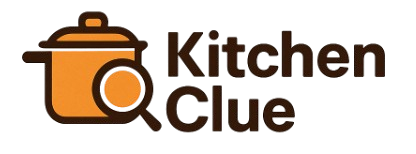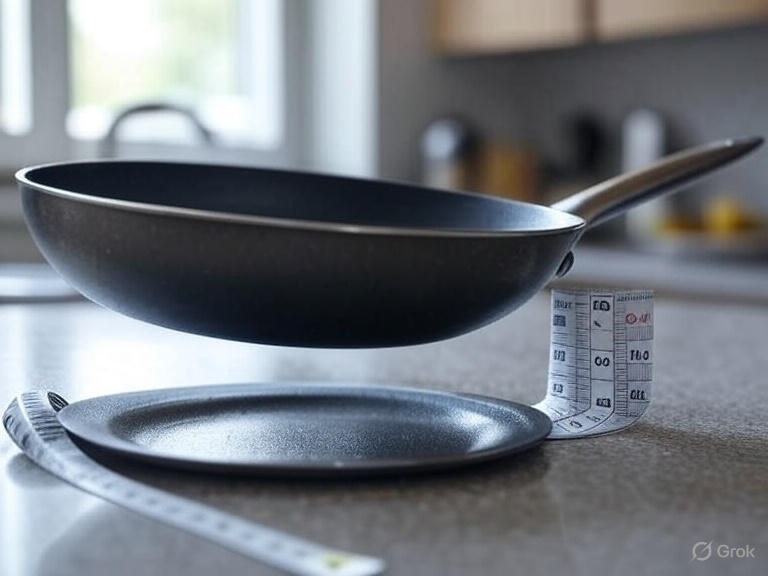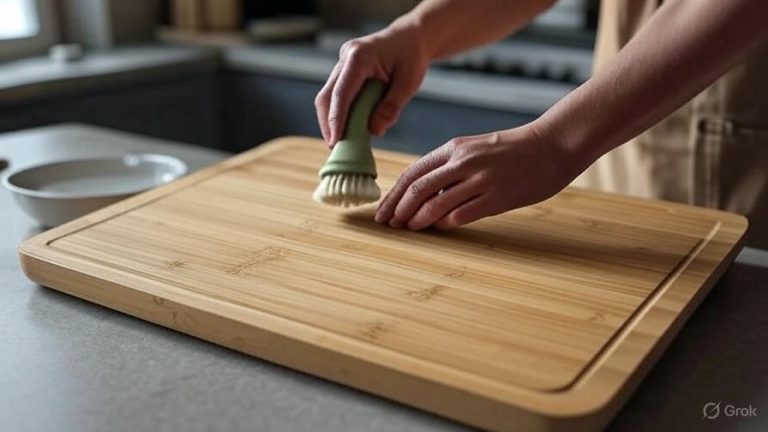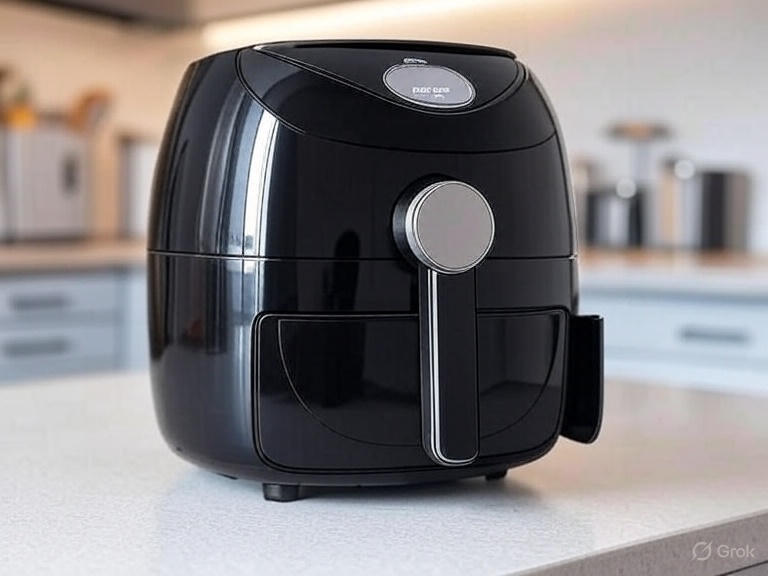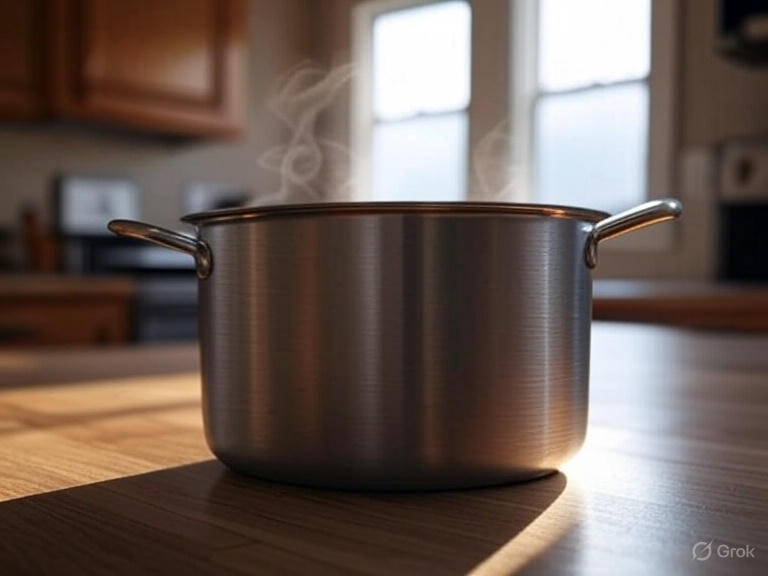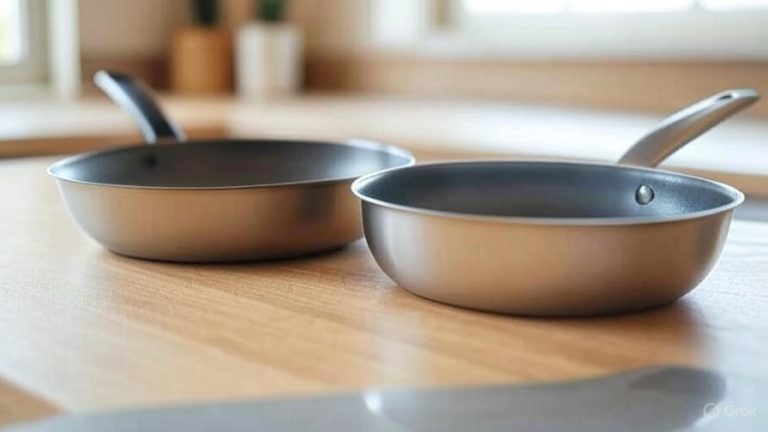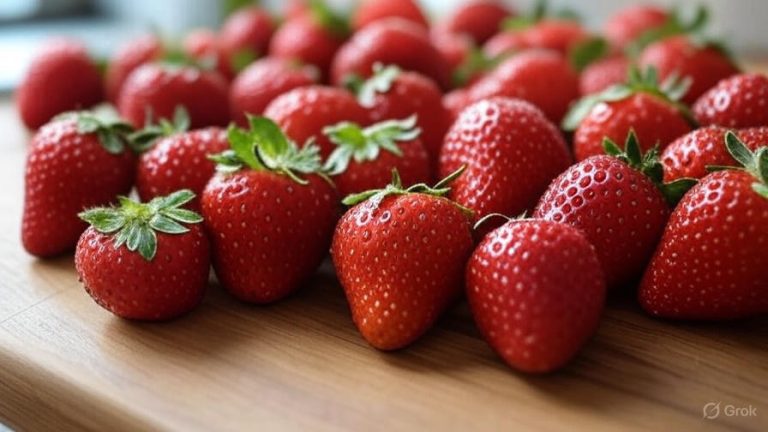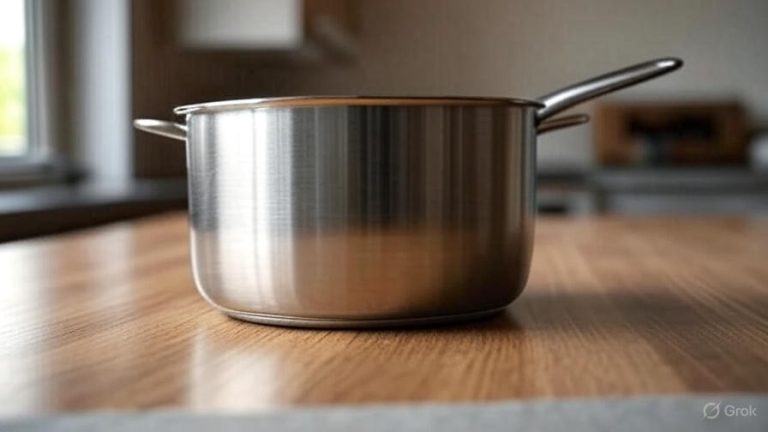How Are Frying Pans Measured?
Shopping for a new frying pan can feel overwhelming when you see numbers like 8-inch, 10-inch, or 12-inch splashed across product descriptions. You might wonder what these measurements actually mean and how they translate to real cooking needs. The truth is, understanding frying pan measurements will transform your cooking experience and help you choose the perfect pan for every recipe.
The Standard Way Cookware Manufacturers Measure Frying Pans
Frying pan sizes refer to the diameter measurement across the top rim of the pan, not the cooking surface itself. When you see a “10-inch frying pan,” manufacturers measure from one edge of the rim straight across to the opposite edge. This measurement system has become the industry standard across most cookware brands worldwide.
The measurement doesn’t include the handle length or any protruding elements. Think of it as drawing a straight line across the widest part of the pan’s opening. This standardized approach helps consumers compare different brands and models more easily.
Interestingly, the actual cooking surface measures smaller than the advertised size. A 10-inch pan typically offers about 8 to 8.5 inches of usable cooking space. The sloped sides reduce the effective cooking diameter, which explains why your ingredients might seem cramped in what appears to be a generously sized pan.
Why Top Rim Diameter Became the Industry Standard
The rim measurement system developed for practical reasons. Early cookware manufacturers needed a consistent way to describe pan sizes that customers could easily understand. Measuring the top provided the most stable reference point since pan bottoms vary significantly based on design and intended stovetop compatibility.
Different cooking surfaces also influenced this decision. Gas burners, electric coils, and induction cooktops all require different bottom configurations. The top rim remained constant regardless of these base variations, making it the most reliable measurement for sizing purposes.
This standardization helped consumers match pans to recipes more accurately. When a recipe calls for a “large skillet,” most cooks understand this means roughly 12 inches. The consistency allows for better cooking results and reduces guesswork in the kitchen.
Common Frying Pan Sizes and Their Best Uses
Small Pans: 6 to 8 Inches
These compact pans excel at single-serving preparations and delicate tasks. An 8-inch frying pan works perfectly for scrambling two eggs, making individual omelets, or heating small portions of leftovers. The smaller surface area allows for better heat control and prevents food from spreading too thin.
Professional chefs often keep small pans handy for quick tasks like toasting spices, melting butter, or preparing garnishes. The reduced cooking surface means faster heating and more precise temperature control, essential for techniques requiring careful attention.
Medium Pans: 9 to 10 Inches
Medium-sized pans handle most everyday cooking tasks for small families or couples. A 10-inch frying pan can comfortably cook breakfast for two people, sear a couple of chicken breasts, or sauté vegetables for a side dish. This size strikes an excellent balance between cooking capacity and manageability.
These pans work well for recipes serving 2-4 people. The cooking surface provides enough room for ingredients to cook properly without overcrowding, while remaining small enough for easy handling and storage.
Large Pans: 11 to 12 Inches
Large frying pans accommodate family-sized portions and batch cooking. A 12-inch pan can handle dinner for four people, brown multiple pieces of meat simultaneously, or cook large quantities of vegetables. The generous cooking surface prevents overcrowding, which can lead to steaming instead of proper browning.
Restaurant kitchens rely heavily on large pans for their efficiency and capacity. Home cooks appreciate these sizes for meal prep, entertaining, or cooking for larger families.
Extra-Large Pans: 13+ Inches
Professional-grade pans in this range serve specialized purposes. They excel at cooking for crowds, preparing large batches for meal prep, or handling oversized ingredients like whole fish. However, these pans require significant storage space and strong burners to heat effectively.
The weight and size of extra-large pans can make them challenging for everyday use. Consider your physical comfort and kitchen setup before investing in these substantial pieces.
How Pan Depth Affects Cooking Performance
While diameter gets most attention, pan depth significantly impacts cooking results. Shallow pans, typically 1.5 to 2 inches deep, excel at searing, browning, and reducing sauces. The low sides allow moisture to escape easily, promoting better browning and preventing steaming.
Deeper pans, ranging from 2.5 to 3.5 inches, handle tasks requiring more liquid or ingredients that need containment. Deep frying pans work well for braising, cooking pasta dishes, or preparing recipes with significant liquid components.
The depth measurement typically appears in product specifications alongside diameter. A pan described as “10-inch x 2-inch” means 10 inches across the top rim and 2 inches deep from rim to bottom.
Material Impact on Pan Measurements and Heat Distribution
Different materials affect how pan measurements translate to cooking performance. Cast iron pans often feature thicker walls, reducing the effective cooking diameter compared to thinner materials like stainless steel or aluminum.
Non-stick coatings add minimal thickness but can affect how food spreads across the surface. Carbon steel pans typically offer dimensions very close to their advertised measurements, while enameled surfaces might reduce cooking space slightly.
Heat distribution varies significantly based on material thickness and composition. Copper and aluminum conduct heat more evenly than stainless steel, meaning the effective cooking area performs more consistently across its entire surface.
Measuring Your Existing Pans at Home
You can easily measure your current frying pans using a standard ruler or measuring tape. Place the measuring tool across the widest part of the pan’s top rim, ensuring it passes through the center point. Record the measurement in inches for comparison with new purchases.
Check multiple pans to understand how different brands size their products. Some manufacturers run slightly large or small compared to stated dimensions. This knowledge helps when replacing pans or adding complementary sizes to your collection.
Don’t forget to measure the cooking surface diameter as well. This practical measurement helps you understand actual cooking capacity and compare it to recipe requirements.
Stovetop Compatibility and Pan Size Considerations
Your stovetop configuration influences optimal pan sizes for your kitchen. Gas burners offer more flexibility since flames wrap around pan bottoms, heating effectively regardless of exact size matching. Electric coil burners work best when pan bottoms closely match burner diameters.
Induction cooktops require magnetic pan bottoms and perform optimally when cookware matches or slightly exceeds the induction zone size. Check your induction burner specifications to ensure proper compatibility with your chosen pan sizes.
Small burners typically accommodate pans up to 8 inches effectively, while large burners handle 12-inch pans comfortably. Using oversized pans on small burners results in uneven heating and hot spots.
International Measurement Variations
While most countries use the rim measurement system, some regions express pan sizes in centimeters rather than inches. A 25-centimeter pan equals approximately 10 inches, following the same measurement principles.
European manufacturers sometimes include metric measurements alongside inch dimensions for international markets. Asian cookware brands occasionally use different sizing conventions, particularly for specialized pan styles like woks or regional frying pan designs.
When shopping internationally or online, verify the measurement units to avoid size confusion. Converting between inches and centimeters helps ensure you select the intended pan size.
Professional Chef Recommendations for Pan Size Selection
Culinary professionals suggest starting with two essential sizes: an 8-inch pan for small tasks and a 12-inch pan for larger cooking projects. This combination handles most home cooking needs while minimizing storage requirements.
Serious home cooks benefit from adding a 10-inch pan to bridge the gap between small and large sizes. This intermediate size works perfectly for many everyday recipes serving 2-3 people.
Restaurant kitchens typically stock multiple pans in each useful size rather than collecting every available dimension. This approach ensures clean pans are always available during busy cooking periods.
Storage Solutions for Different Pan Sizes
Pan storage becomes increasingly important as your collection grows. Nest similar-shaped pans to save space, placing protective layers between non-stick surfaces to prevent damage. Hanging racks work well for frequently used pans while keeping them easily accessible.
Consider your cabinet dimensions when selecting pan sizes. Large pans might not fit in standard cabinets, requiring alternative storage solutions like pot racks or dedicated cookware drawers.
Vertical storage systems maximize space efficiency while protecting pan surfaces. Adjustable dividers accommodate different sizes while keeping everything organized and accessible.
Making Smart Purchasing Decisions Based on Measurements
Understanding measurements helps you avoid duplicate sizes and identify gaps in your cookware collection. Compare your cooking habits with available pan sizes to make informed decisions about which additions would prove most useful.
Quality matters more than quantity when building a pan collection. Invest in fewer, better-made pans in the sizes you’ll actually use rather than accumulating many low-quality pieces in every available dimension.
Consider multi-purpose designs that maximize versatility within chosen sizes. Some pans feature removable handles, oven-safe construction, or other features that expand their utility beyond basic frying tasks.
Conclusion: Choosing the Right Pan Sizes for Your Kitchen
Frying pan measurements follow a straightforward system based on top rim diameter, but understanding how these numbers translate to actual cooking capacity makes all the difference in your kitchen success. The advertised size doesn’t directly equal cooking surface area, and factors like depth, material, and your specific cooking needs all influence which sizes work best for your situation.
Start with essential sizes that match your typical cooking patterns, then expand your collection based on actual needs rather than perceived requirements. Quality pans in the right sizes will serve you better than numerous pans in dimensions you rarely use.
Remember that the best pan size is the one that matches your cooking style, family size, and kitchen setup. Armed with this measurement knowledge, you can confidently select frying pans that will enhance your cooking experience and deliver consistently excellent results for years to come.
